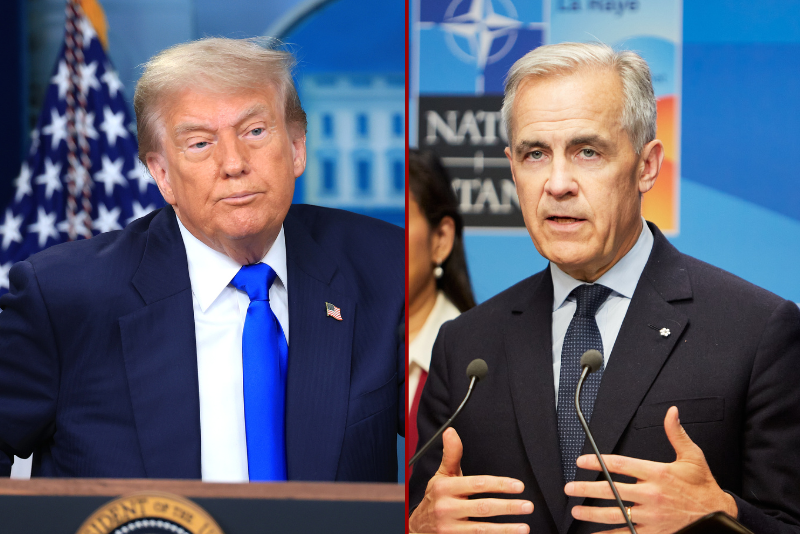
OAN Staff Brooke Mallory
12:06 PM – Monday, June 30, 2025
Canada reversed its decision to implement a digital services tax, with officials citing expectations of a mutually beneficial and comprehensive trade agreement with the United States, according to a statement released by Ottawa on Sunday night, just one day before the tax was set to take effect.
The policy shift follows a declaration by President Donald Trump over the weekend, in which he announced the termination of all trade negotiations with Canada in retaliation for Ottawa’s plan to levy the tax on American technology companies.
“Today’s announcement will support a resumption of negotiations toward the July 21, 2025, timeline set out at this month’s G7 Leaders’ Summit in Kananaskis,” Canadian Prime Minister Mark Carney said in the statement.
The first collection of payments under Canada’s digital services tax was scheduled to commence on Monday. The tax, imposing a 3% levy, was set to apply to both domestic and international technology firms, including major U.S. corporations such as Amazon, Google, and Meta.
This represents a dramatic reversal from Ottawa’s initial stance, to say the least, as Canadian officials puffed up their chests earlier this month to declare that they would proceed with the digital services tax despite strong opposition from the United States.
“Rescinding the digital services tax will allow the negotiations of a new economic and security relationship with the United States to make vital progress and reinforce our work to create jobs and build prosperity for all Canadians,” Canada’s Minister of Finance and National Revenue Francois-Philippe Champagne stated.
Carney “has been clear that Canada will take as long as necessary, but no longer, to achieve that deal,” he added.
Originally introduced in 2020, Canadian officials claimed that the digital services tax aimed to address a “fiscal imbalance” wherein major technology companies generated substantial revenues from Canadian users without being subject to commensurate taxation.
Ottawa argued further that the tax was implemented as an interim measure while it collaborated with international partners — including the United States — to develop a multilateral framework that would ultimately supplant unilateral digital services taxes.
Soon after the 47th GOP president announced that the U.S. was “terminating ALL discussions on Trade with Canada,” Treasury Secretary Scott Bessent told the press that Trump’s U.S. Trade Representative Jamieson Greer was planning to investigate the tax to “determine the amount of harm to the U.S. companies and the U.S. economy in general.”
“Canada has this digital services tax. And several other countries do too. We disagree, and we think that they discriminate against U.S. companies,” Bessent said on CNBC’s “Closing Bell: Overtime.”
“Several countries within the European Union have digital service taxes. None of them have done those retroactively,” he continued.
The United States provides Canada with a wide range of economic, security, and strategic benefits. Canada benefits from U.S. military capabilities and strategic deterrence. Canada is also part of the Five Eyes alliance, giving it privileged access to American intelligence. While the relationship is said to be mutually beneficial, Canada’s economy and security are more dependent on the U.S. than vice versa, simply due to the vast difference in size and global power.
Stay informed! Receive breaking news blasts directly to your inbox for free. Subscribe here. https://www.oann.com/alerts
What do YOU think? Click here to jump to the comments!
Sponsored Content Below

